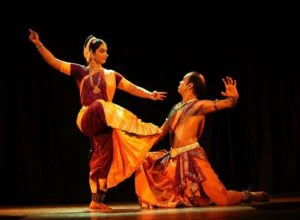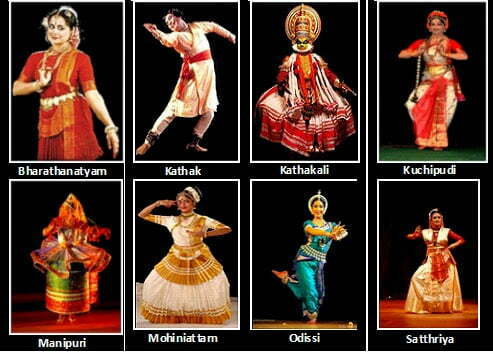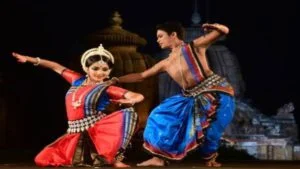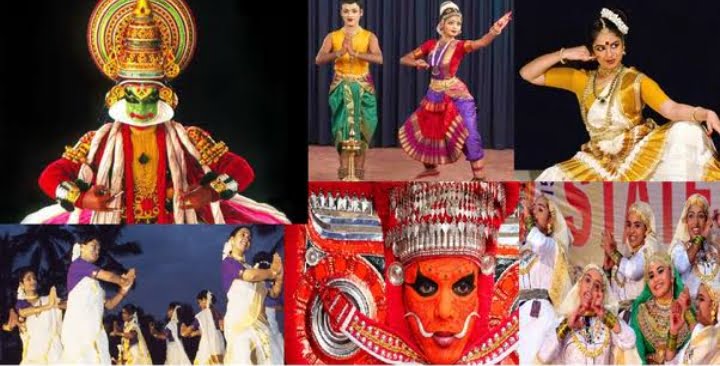Dance is one of the most creative forms of self-expression. But its quality to be a language of its own is exactly what makes it so beautiful to behold. Indian classical and folk dances have a special place in this lovely aspect of culture, history, and tradition.
The movement or mudras of hands in Bharatnatyam, the graceful twirls of Kathak, the accuracy of Ballet, the creativity of street–dancing; all these forms show the art of speaking through dance. But one of the best examples of dance as a language is the art of folk dancing where it stands for the universal language of brotherhood, enjoyment, and the vitality of life. However, despite the immense amount of folk dances known to us from India, there are many lesser-known Indian dances that are not mentioned as much as their popular counterparts. But, this doesn’t mean that they are not worth knowing about, in fact, quite the opposite.
The likes of Bhangra, Ghoomar, Garba, and many others have been famous for a long time. However, the below discussed dance forms deserve their own share of the spotlight. Therefore Podium brings to you four such lesser-known Indian dances from different corners of the country. Read on to find which ones are they.
Lesser Known Indian Dances
Hojagiri, Tripura
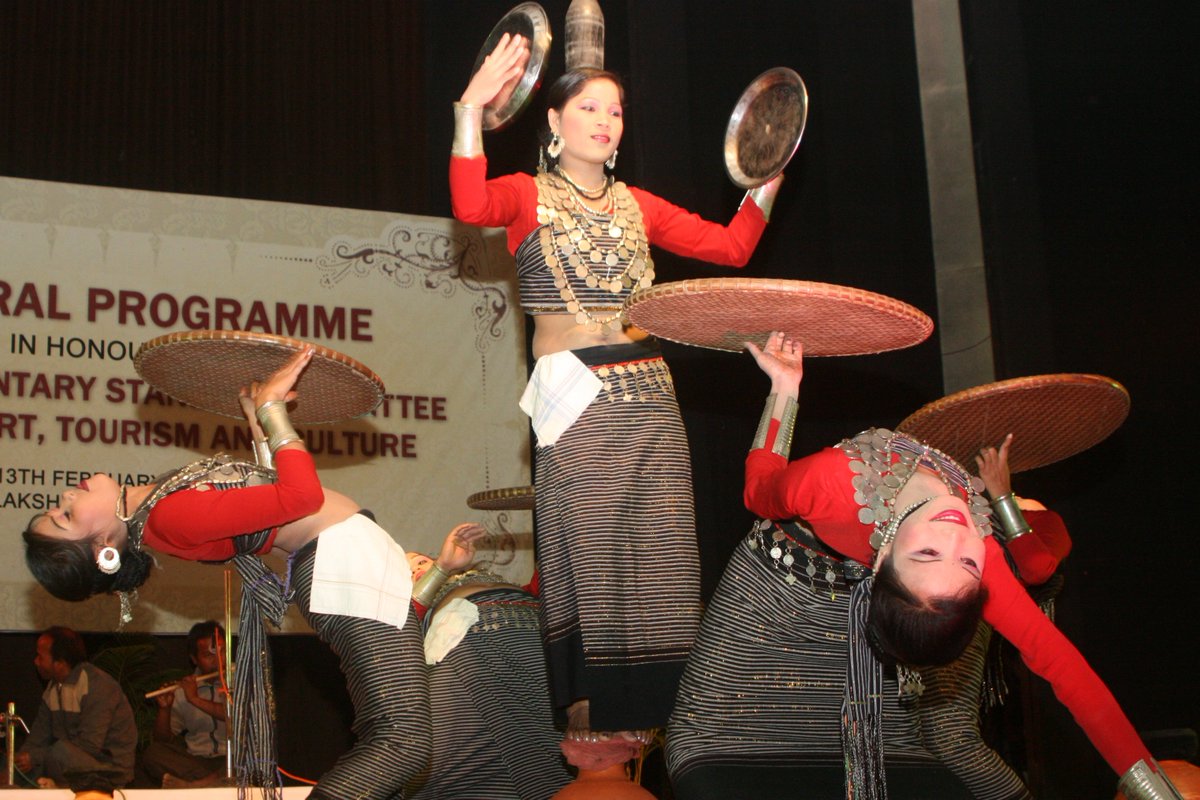
Beautiful and mystical, the northeast states of India continue to be an enigma with regards to culture. The mighty dance culture of Tripura comes forth in this list with the Hojagiri dance at the helm.
As the northeast is famous for its clans and tribes, this folk dance originates from the Riang clan. Young women and girls perform this in a group of four to six, singing and balancing on an earthen pitcher. They also manage other props such as a bottle on their head and an earthen lamp in hand, while moving only the lower half of the body.
The male members play the Khan and Samui/Kshumu (wind instrument). Each performer requires a Bailing, a wide rice cleaning article made of cane, a pitcher or kola, bodo(bottle), chati/Kupi( a household item traditional lamp), a mairang ( a plain dish), and a handkerchief for each performer. Lasting about thirty minutes, the dance requires the performer to undergo extensive training and rehearsal for slow hip and waist maneuvering.
The dance is performed at the Hojagiri festival or Laxmi Puja, held on the following full moon night on Durga Puja, generally after the third day of Vijay Dashmi. People worship the Goddess Malima and exhibit the whole huk or jhum cultivation process through this dance. Hojagiri also features in our article on folk dances from North-East India, so, make sure you check it out! If you want to delve further and watch a dance performance, you may see it here!
Sidi Dhamal, Gujarat
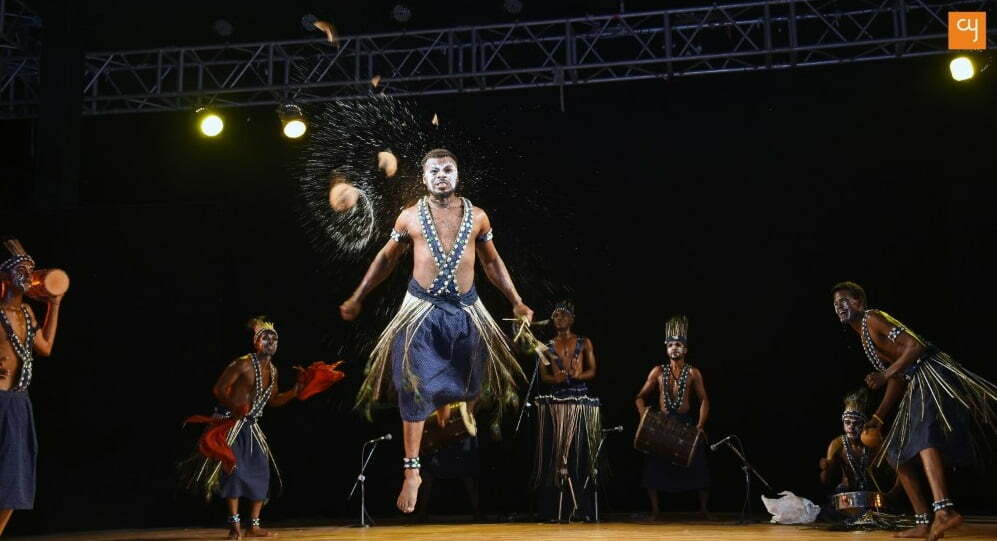
While Gujarat is famous for Garba and Dandiya, its cultural heritage also includes vibrant and powerful tribal elements. Sidi Dhamal is one of them. The Sidi, also called Sheedi and Habshi, is one of the major tribal communities of Gujarat, and also exists in other states of Karnataka, Goa, and Maharashtra. Many sources say that the Sidis are known to come from East Africa in the 1200-1290 CE. According to other sources, they arrived as slaves in the 17th century when Portuguese slave traders sold them to the local princes.
The cultural heritage of Sidis dates back almost 300 years. Siddi Dhamal is one such folk dance that incorporates Sidis love for hunting. Since earlier days, dhol(Dhamal) or Mushira have been essential instruments. Sidis are known for their physical strength and loyalty. They also take pride in their vibrant tribal culture which they display through the Sidi Dhamal dance. It is an action-filled dance, where dancers throw coconut in the air and break them open using their heads. The performers also dance on red-hot embers to the beat of the drums played.
The costumes include wearing hardly anything over the waist, while they wear either a piece of fabric or peacock feathers below the waist. In the older days, Sidis used to perform this dance, also known as Mashiru Nritya, after returning from a successful expedition. Dhamal was one of the main sources of entertainment for the rulers. To see one such power-packed performance, click on the video below-
Kud Dance, Jammu and Kashmir

Surrounded by snow-capped mountains and enchanting sceneries, the northernmost region of this country, has a rich cultural heritage. Many folk dance forms find their abode in this hilly terrain, originating from the different ethnic and economic backgrounds present in the union territory.
One of such dance forms is the Kud dance in the popular district of Jammu. Locals perform it to honor the gods ‘Lok Devtas’ as a thanks-giving ritual mostly on the nights. Unlike many other dance forms, young and old both participate frequently. It is full of interesting and twisted movements on rhythm and beats.
In a typical Kud dance, dancers are twenty to thirty in number. The dance generally continues till late nightly hours. Spontaneity, a key feature for most folk dances is present here as well. All men and women dress in the best possible manner when they come for participating in the Kud dance rituals. Male and female performers have differences in the kind of attire they wear. The men wear Kurtas and Churidars (tops and bottoms) along with turbans on their heads with a piece of cloth tied near the hip. Generally, the Kurta and the churidar are of the same color, generally white.
It is accompanied by traditional instruments such as Narsinghas or big trumpets, Chhainas, flutes, and drums. The melodious combination sets in flow an addictive rhythm, which suits the night’s chilly atmosphere of these mountainous regions perfectly for grooving around the bonfire. Check out a smoothly executed Kud Dance performance below,
Karakuttam, Tamil Nadu
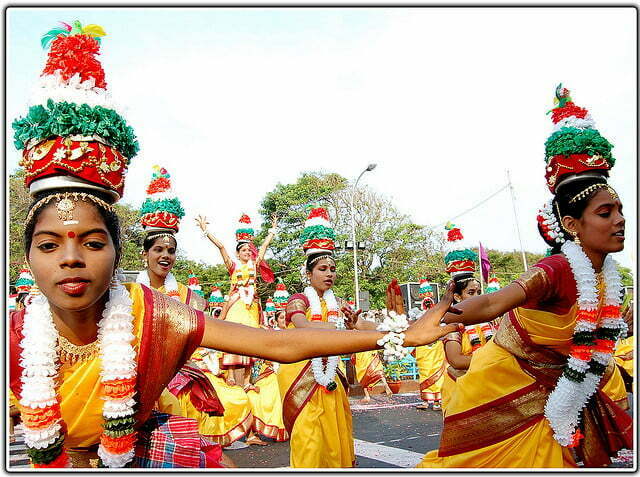
The entirety of South India, much like the northeast, is often considered as a whole. While the states are similar because of their geographical location, there are things that make them unique. The Karakuttam folk dance is one of them.
Tamil Nadu has a rich legacy and its tradition often originate from ancient times. Karakuttam is performed in the devotion of the rain goddess Mariamman. An ancient Tamil epic states that the dance is derived from Bharatham and is a mixture of multiple dance forms like Bharatnatyam. Folk Carnatic music, called Amrithavarshini, generally accompanies the dance.
An enchanting Karakattam performance involves graceful gyrating movements and witty banter full of gaeity. Atop a pot filled to the brim with either water or rice, are three tiers of green, white and pink flower arrangements. A jarringly green model of a parrot finishes off the figure.
A Karakuttam performer balances all this on her head while he or she dances. Traditionally, the dance is of two types; Atta Karakam which symbolizes joy and happiness, and Sakthi Karkam which is performed only in temples for the spiritual offering. However, the main feature of this lesser-known Indian dance is to have a karakam (Pot) on the head of the dancer which they have to balance. Common attire includes sarees or kurtha, colored towels, and a pot. Check out this traditional Karakauttam performance to see what we are talking about!
As Tamils believe that Mother Nature gives bountiful rain and protects the harvest, this folk dance focuses on invoking rain. While it has also become part of a larger debate regarding morality in performances, Karakattam remains one of the most important elements of Tamil culture, though it is one of the lesser-known Indian dances.
Final Thoughts
There are many dance forms, folk or otherwise which do not feature in this article. But their continuous residence in the dark gives the reader an opportunity to explore more. A child’s curiosity is boundless and thankfully, India’s list of dance forms is also endless.
Hopefully, this article would help one learn more about the various dance forms of India and inspire one to uncover more about this diverse and beautiful land of ours. To learn more and introduce your child to other styles of dancing, you can check out other articles on the Podium Blog on Classical Dance and Modern Dance. Keep checking back for some amazing updates on dance, music, and more right here!

